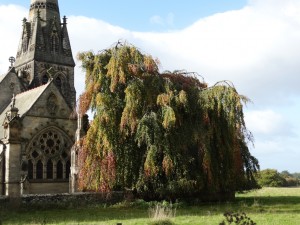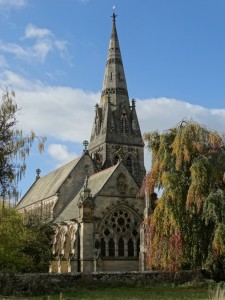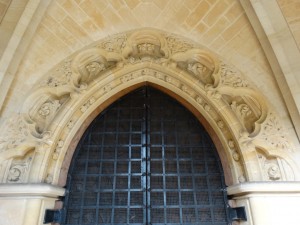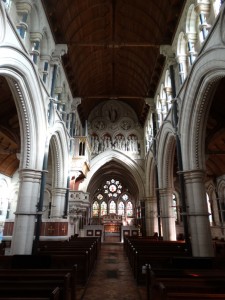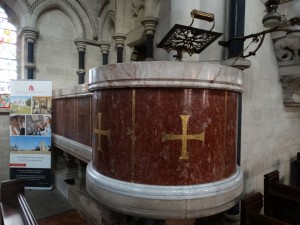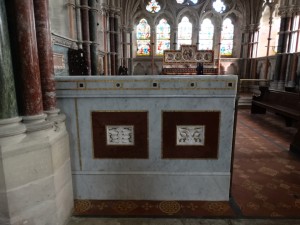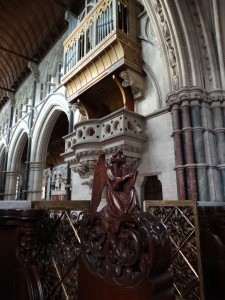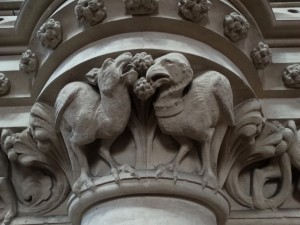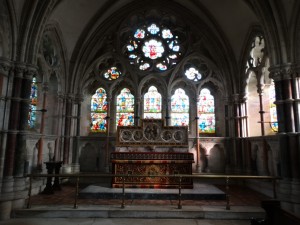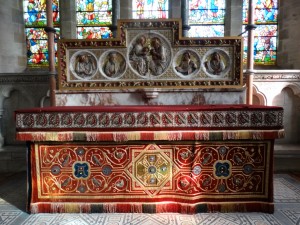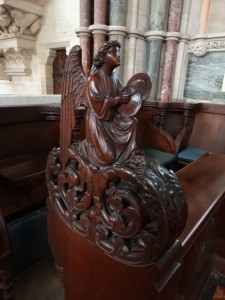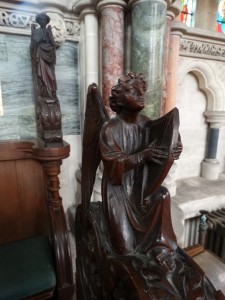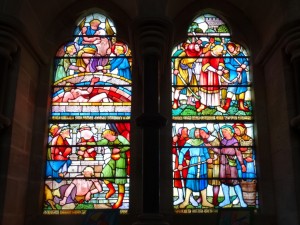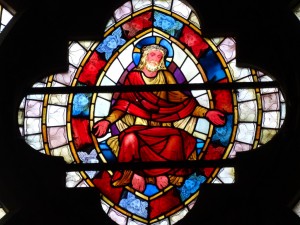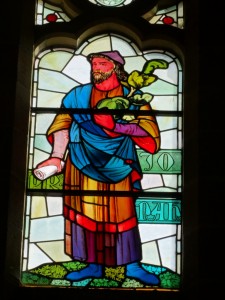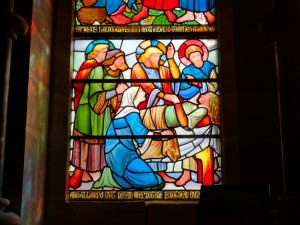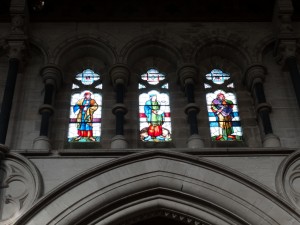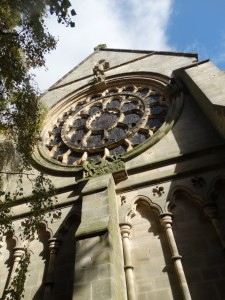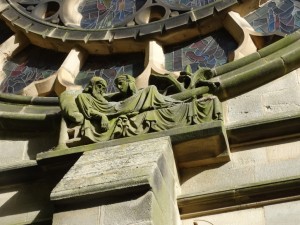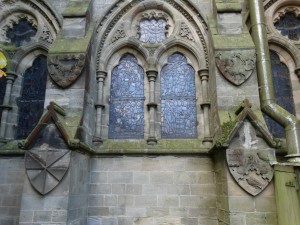The Church of Christ the Consoler, Skelton-cum-Newby, North Yorkshire is at SE360679, between the village and Newby Hall. The Hall looks well worth a visit – website – so I’ll put that on the list for next year. It is a Churches Conservation Trust church – website.
The church was built after an awful event. George Frederick Robinson (1827-1909) became the first Marquess of Ripon in 1873, inheriting a lot of land, including Fountains Abbey to the west of Ripon and Newby to the west. In 1870 his 23 year old neighbour and brother-in-law Frederick Grantham Vyner was travelling in Greece with a party of distinguished English visitors. They took a carriage ride from Athens to Marathon, and on their return journey were captured and held by brigands. A ransom was demanded of one million drachmas, then about £32,000, now over £1 million. The money was raised, and Greek troops sent. They were told not to shoot, but did. The kidnappers killed four of their hostages, including Vyner. Lady Mary Vyner, and his sister, Lady Ripon, decided to use the unspent ransom money to build this church, and the one at Studley Royal.
The architect was William Burgess (1827-81) who had worked for the family on Cardiff Castle and elsewhere. Lord Ripon was co-patron and intermediary although, rather ironically, he converted to Roman Catholicism before this church was complete. The foundation stone was laid on 17 May 1871, and the church was consecrated on 2 October 1876. It was built by J. Thompson of Peterborough.
I walked through the park and thought this is a lovely setting. The porch is impressive, with Christ the Good Shepherd.
Then I went inside. I wasn’t expecting this, and I don’t suppose you were either! The excellent guidebook notes that Pevsner saw only “tremendous ornateness, glitter … excessive relief … and … great opulence … of a somewhat elephantine calibre”. There is a quote from Aitchison (who he?) “Decorate up to the presence that fills the house.” Here that has been taken literally – this is the house of God, so is decorated up to the hilt. The West wall is impressive too.

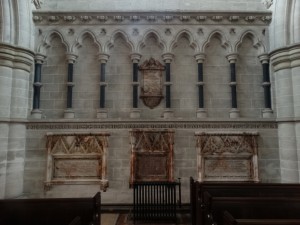 The font is made of Tennessee marble and was given by Lord Ripon in memory of his only daughter Mary, who died at the age of one. Christ and John the Baptist in the cover.
The font is made of Tennessee marble and was given by Lord Ripon in memory of his only daughter Mary, who died at the age of one. Christ and John the Baptist in the cover.
I love the way the pulpit comes out from the wall. The chancel screen of white marble is panelled with porphryr, mosaic and alabaster. Time for Wikipedia: Porphyry is a textural term for an igneous rock consisting of large-grained crystals such as feldspar or quartz … . In its non-geologic, traditional use, the term porphyry refers to the purple-red form of this stone, valued for its appearance. The word comes from Greek, and means purple. It was the colour of royalty, and is one of the hardest known rocks. Alabaster is a name applied to varieties of two distinct minerals, gypsum(a hydrous sulfate of calcium) and calcite, a carbonate of calcium, also known as onyx-marble, Egyptian alabaster or Oriental alabaster. So now you know!
The organ was built by T.C. Lewis & Co. of Brixton in 1875. The organ loft leans forward with wonderful animals and angels.
The altar frontal is dramatic, and the reredos is by James Redfern. It is carved with medallions of the Magi and the prophets in white alabaster.
 The floor is paved with chequered red and yellow tiles by Godwins of Lugwardine. The chancel pews are American walnut.
The floor is paved with chequered red and yellow tiles by Godwins of Lugwardine. The chancel pews are American walnut.
 Rather than the symbol of crucifixion which you do often have over a chancel arch, we have Christ ascending to heaven. When you are commemorating the murder of a son, you need the hope that springs eternal.
Rather than the symbol of crucifixion which you do often have over a chancel arch, we have Christ ascending to heaven. When you are commemorating the murder of a son, you need the hope that springs eternal.
The magnificent stained glass was manufactured by Saunders & Co, from sketches by Horatio Lonsdale and cartoons by Frederick Weekes.
After this riot of colour I went outside. Christ the Consoler at the East End.

